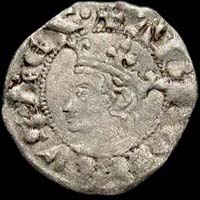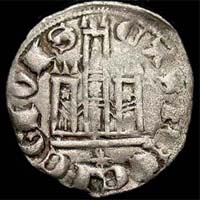Information about Spanish Real
 |
 |
| Real | |
Following the introduction in Austria of the Guldengroschen in 1486, in 1497 was minted the “Real de a ocho” (“piece of eight”, also known as “Spanish dollar”), with a value of 1 ounce of silver (27,4 grams) it was worth 8 Real, used in all the Americas and Asia. In 1566 the Spanish escudo was introduced, gold coin with a value of 16 reales.
In 1642 were minted the real de plata (in silver) and the real de vellón (billon) with a ratio of 2 real de vellón = 1 real de plata. In 1737 the ratio between real de plata and real de vellón increased to 2.5 and it was named real fuerte, maintaining the ratio of 16 reales de plata fuerte = 1 escudo.
In 1850 the decimalization of the currency took place in Spain and the real de vellón ("real" in short) was adopted as new base for the monetary system, with céntimo de real (one hundredth of a real) as its fraction.
A new escudo was introduced in 1864, with the value of 1 escudo = 10 real; in 1868 the escudo was replaced by the peseta, with a ratio of 1 peseta = 0.4 escudo = 4 real.